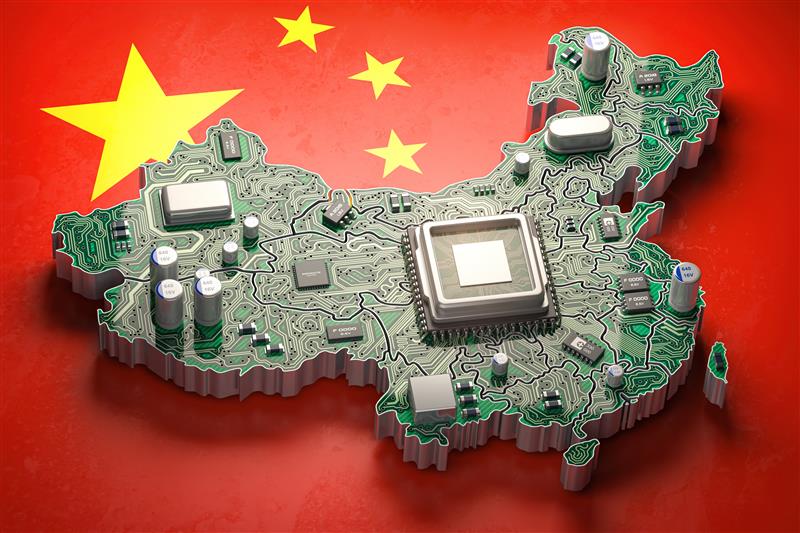As MNCs assess their future in China amid trade restrictions and the push for chip independence, lucid communications will make all the difference.

In China, companies in the international chipmaking ecosystem face an environment defined by uncertainty and recalibration. Sweeping export restrictions have made doing business a minefield, and as the government pushes for semiconductor independence, businesses that were once revered have simply become regular players. What used to be seen as an asset (being ‘global’) has become something of a liability: customers fear less flexibility and cost effectiveness; talent is concerned about shrinking opportunities for development and job security.
These are legitimate issues that should be taken seriously. But it doesn’t mean opportunity has evaporated — far from it. Indeed, there seems to be growing recognition that current restrictions on chip exports, such as those imposed by the Biden administration, may be too complex and counterproductive to Western interests. In early May, the Trump administration announced that it would replace the Biden-era ruling with a more realistic alternative.
At the same time, US-based companies like NVIDIA have adapted their strategy to remain active in the China market. The company plans to release a modified version of its H20 AI chip in compliance with US export restrictions by July. Finding ways to keep business flowing is crucial considering that China accounted for 13% of NVIDIA’s sales in the latest fiscal year.
It’s clear that as China continues to invest heavily in domestic chipmaking capabilities, it still needs the support of international companies that are ahead of the game, even if their premium cachet as suppliers and employers has shifted.
More than ever, communications has a central role to play in achieving business continuity and competitive advantage. In challenging times it’s easy to default to a defensive mindset and corresponding messaging. Instead, the focus should be on strategic engagement that emphasises collaboration, co-development and local contribution as active partners in China’s innovation journey, combined with transparency about how you add value to the ecosystem.
We’ve seen companies move from touting global status to emphasising local teams, R&D and solutions. NVIDIA last year touted its collaboration with Alibaba subsidiary Alibaba Cloud to develop China’s first GPU cloud platform for high-performance computing, as well as autonomous driving solutions for domestic carmakers.
It starts with a mindset of working with geopolitics — proactively as opposed to reactively. In more freewheeling times, the mantra was largely, “Business is business, politics is politics”. Today, geopolitics is not an optional interest; it’s at the core of business strategy. This is especially the case in the semiconductor industry, where geopolitical policies directly influence market access, supply chains and technology development.
This means you need to be personally invested in understanding global political developments and how they impact your China-facing communications strategy. It’s less about reacting to new regulations or trade restrictions and more a case of actively integrating geopolitical awareness into your business and comms planning. With this in mind, here are some further considerations that will help maintain relevance and results in the China market:
1. Get the global team on your side
A clear, aligned voice requires a sound understanding of China’s complexities at the global level. China is a distinct, evolving market shaped by its own cultural dynamics, national priorities, and policy sensitivities. Missteps in messaging often stem not from malice but from misunderstanding. Conduct internal briefings or ‘China context’ sessions for HQ teams to ensure they understand the local operating environment, both in substance and tone.
2. Face-to-face engagement counts for a lot
Despite digital tools, in-person presence remains irreplaceable. Executive visits help bridge cultural gaps, inspire local teams, and visibly signal long-term commitment — a critical factor amid concerns over foreign firms’ staying power. Plan regular in-market visits by senior leadership, including the CEO. Use these visits to engage both internal and external stakeholders, and to reinforce confidence.
3. Refocus employer branding for the current reality
China has a deep reserve of engineering and technical talent — but international companies must now compete on clarity, purpose, and trust. Today’s job seekers are asking: “Will my career stall if I join a foreign brand in today’s climate?” It’s essential to speak to them on their terms. This means humanizing the brand while offering a combination of reassurance and excitement.
Strengthen your employee value proposition (EVP) across three levels:
- Contractual: Communicate job stability, continued investment, and China market commitment.
- Experiential: Highlight humane work culture — especially in contrast to ‘996’ and other domestic workplace norms.
- Emotional: Emphasize mission. Engineers want to work on technologies that push boundaries. Purpose-driven storytelling can inspire loyalty and overcome salary gaps.
4. Hyperlocalize recruitment communications
Top candidates aren’t just reading job listings — they’re participating in niche digital communities, from ACG (Animation, Comic, Game) forums to fitness and sports groups. These are places where trust is built and perceptions are formed. Localize employer branding by engaging in these ecosystems. Feature employee ambassadors who resonate with local audiences and reflect your culture authentically.
5. Prepare for every scenario
Geopolitical volatility is a fact of life, but you can manage it by planning ahead. This is not optional. Communicators should focus on crafting clear, adaptable messaging. For example, consider how your messaging might shift if further sanctions are imposed or if a cooperative opportunity arises. Create modular messaging frameworks that can pivot based on how the political environment evolves—whether that means escalating restrictions or windows of cooperation. Align global and China teams on what to say, and equally what not to say.
6. Proactively engage the media
Reputation is shaped long before a crisis hits, and this applies to semiconductor companies as much as consumer brands. In China, building trust with local media, analysts and stakeholders is a long game, but one that pays off when challenges arise. The goal should be to contribute to balancing the narrative of self-sufficiency and ensuring your organization’s voice is well represented. Position your company as a consistent, constructive presence through ongoing media engagement. Focus on safe yet strategic themes: talent development, sustainability, R&D investments and local collaboration.
7. Consistent messaging cuts through
In a fragmented information landscape, targeted repetition builds credibility. Messages need to be not only accurate and engaging but also echoed across all channels — from press statements to internal meetings. Develop a shared message bank and internal alignment tools. Ensure that both global and local teams are synchronized, especially on sensitive or high-visibility topics.
In the semiconductor sector — where national security, supply chains, and innovation collide — communications is core to strategic leadership. The companies that continue to succeed in China will be those that communicate consistently, engage meaningfully, and demonstrate cultural fluency at every touchpoint. In a world of hard edges (and tech), soft power always matters.
Get in touch to find out how we can help innovative tech and B2B brands grow in China and beyond.

